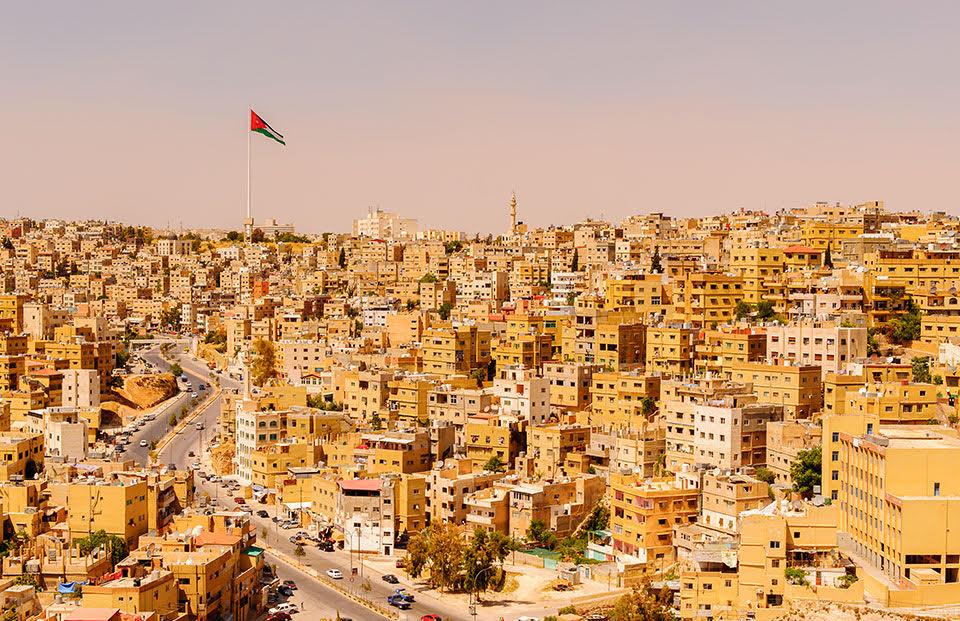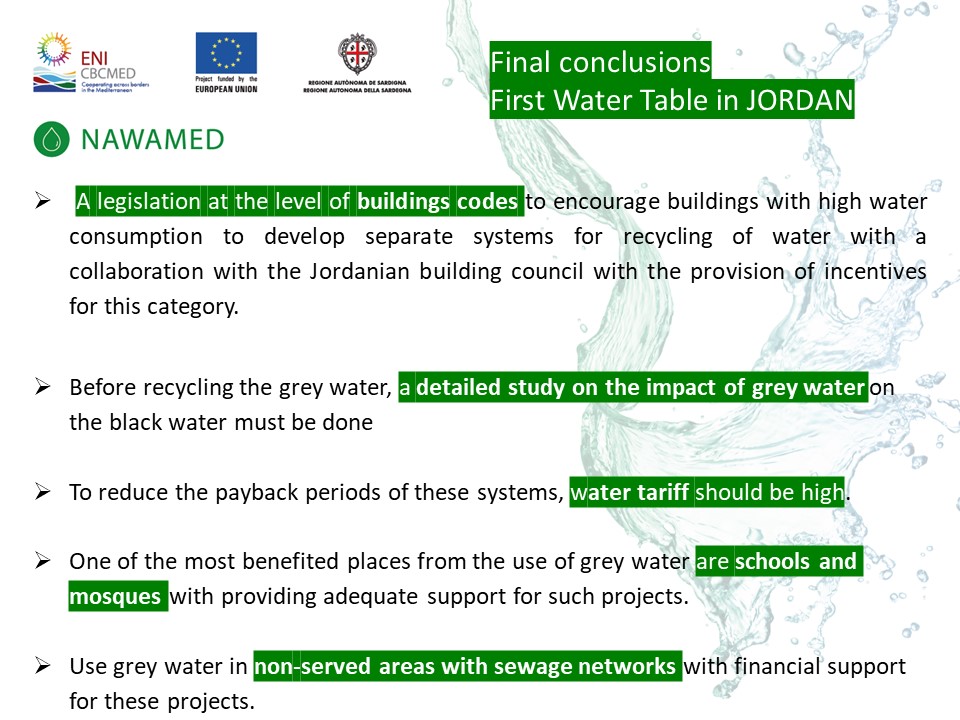NAWAMED to foster separate systems for recycling water with the provision of incentives in Jordan

During the national meeting organized by the University of Jordan (UJ), on May 27th, 2021, stakeholders identified and debated about specific obstacles occurring within the country/regional context and came up with strategies on how to tackle such obstacles in order to facilitate the application of non-conventional water resource (NCWR) technologies and water-demand management (WDM) practices.
Mr. Marzio Melis (Energy Water Agency of Malta - EWA), partner of NAWAMED and responsible for this activity, presented on the common barriers for the application of NCWR and WDM in the Mediterranean regions. There were a lot of contributions from the Jordanian stakeholders, moderated by Prof. Ahmed Al-Salaymeh (NAWAMED project coordinator at UJ), in order to reach final shared conclusions to face four types of identified barriers: legislative/regulatory, technical, social/public perception and economic/financial.
It is important to select the optimal tank size in order to have water harvesting system practice to be accepted by people. In addition, the unit price has an important impact on the payback period
Furthermore, the high initial cost of greywater treatment system and water harvesting systems make it unaffordable to people.
The NCWR - treated wastewater, saline and grey water - and water harvesting techniques are used to address the challenges facing the development of agriculture in Jordan
The law of the ministry of water and irrigation stipulates that a cistern for storing rainwater must be built as part of any under-construction building.
It is preferable to use grey water in non-served areas with sewage networks after studying the impact of those water on the black water since wastewater in Jordan is high in Biochemical Oxygen Demand (BOD5), Chemical Oxygen Demand (COD), Total Suspended Solids (TSS), Total Dissolved Solids (TDS).
Furthermore, the Ministry of Environment stated, in the Green Growth National Action Plan 2021-2025, that the main barriers to expanding both urban and rural rainwater harvesting are scattered governance, awareness, and access to funding.
It’s necessary to enhance awareness campaigns for citizens on the proper ways of using grey water and on the benefits of grey water reuse
Therefore, if water-efficient technologies are integrated at the code level, the subsequent cumulative effects on water management across the country will be significant, as market opportunities open up for new products, customers demand more water-efficient designs, and designers face less resistance to integrating efficient systems in buildings.
A legislation at the level of buildings codes to encourage buildings with high water consumption is a crucial factor to develop separate systems for recycling water with the provision of incentives for this category
At the end of the meeting, those important recommendations and conclusions were reported and they can stimulate the debate during the next meeting, which will be conducted on June 30th 2021, to drive stakeholders focusing on the current and emerging WDM and NCWR technologies.
This was, in fact, the first of four meetings during which four key themes shall be discussed. The final conclusions will lead NAWAMED partners to the formulation of a set of country specific policy recommendations. Furthermore, those conclusions will be key to the development of a “Mediterranean Policy Document” which shall identify the key policy approaches required to support the increased adoption of WDM and NCWR at Mediterranean level.










